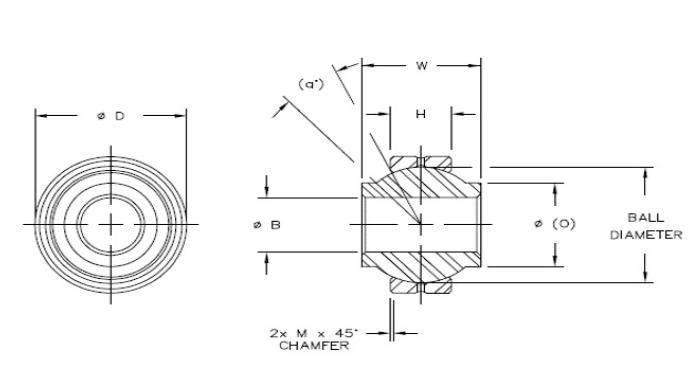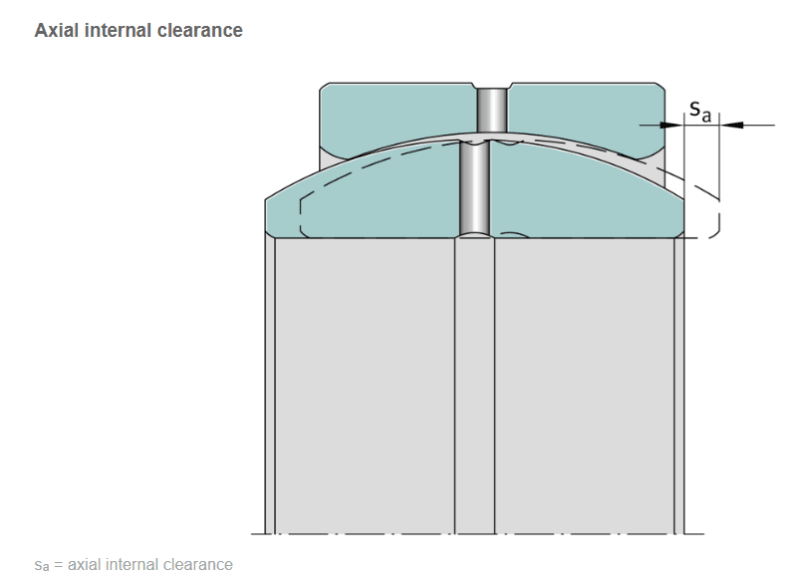rollingcloud
Aerospace

The axial play is defined as the distance by which the inner ring/ball can be moved in an axial direction relative to the outer race from one extreme position to the opposite extreme position.

Radial play is the total displacement of the ball in the radial direction.
Sometimes I see both radial and axial clearance specified, sometimes it's only one and sometimes it's mixed. For example, in this case, NHBB listed max axial play where SKF provided axial play.
So, in an ideal world where both profiles of the race and the ball are perfectly spherical, axial play would equal radial play? In real world, the differences are due to manufacturing variation such as roundness tolerance? Or is the race inner profile not exactly intended to be spherical?
